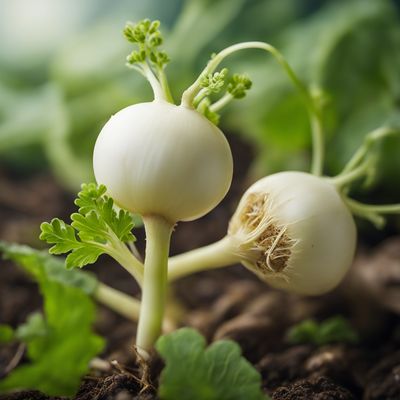
Ingredient
Angelica roots
The Healing Power of Angelica Roots
Angelica roots are long, slender roots that have a distinct earthy and slightly bitter taste. They have a fibrous texture and are usually pale yellow or brown in color. These roots are often used in herbal teas, liqueurs, and as a flavoring agent in various dishes.
Origins and history
Angelica roots have a rich history dating back to ancient times. They were highly valued by the Greeks and Romans for their medicinal properties and were believed to have healing powers. Angelica roots were also used in traditional Chinese medicine to treat various ailments. Today, they are cultivated in many parts of Europe and Asia.
Nutritional information
Angelica roots are low in calories and are a good source of dietary fiber. They also contain essential oils, vitamins, and minerals such as iron and calcium.
Allergens
There are no known allergens associated with angelica roots.
How to select
When selecting angelica roots, look for firm and plump roots with a smooth and unblemished surface. Avoid roots that are soft, shriveled, or have moldy spots. Fresh angelica roots should have a strong aroma.
Storage recommendations
To store angelica roots, wrap them in a damp paper towel and place them in a plastic bag. Store them in the refrigerator for up to two weeks. Alternatively, you can freeze the roots for long-term storage.
How to produce
Angelica roots can be grown in a garden or in containers. They prefer moist, well-drained soil and partial shade. Sow the seeds in spring or fall and keep the soil consistently moist. Harvest the roots after two to three years of growth.
Preparation tips
To prepare angelica roots, wash them thoroughly and peel off the outer layer. The roots can be used fresh or dried. Fresh angelica roots can be chopped and added to soups, stews, or stir-fries. Dried angelica roots can be used to make herbal teas or infused into spirits and liqueurs.
Culinary uses
Angelica roots are commonly used in herbal teas, liqueurs, and as a flavoring agent in baked goods, desserts, and savory dishes. They add a unique herbal and slightly bitter flavor to dishes and are often used in Scandinavian and Eastern European cuisines.
Availability
Angelica roots are commonly available in Europe and Asia. They are cultivated in countries such as France, Germany, Sweden, China, and Japan.

